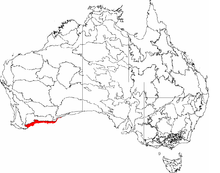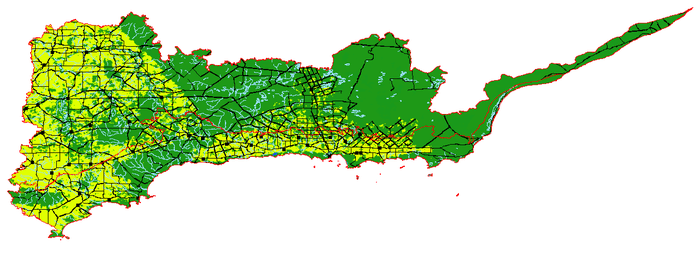Esperance Mallee


Esperance Mallee is a World Wide Fund for Nature ecoregion on the south coast of Western Australia, a coastal strip where the predominant vegetation consists of short eucalyptus trees and shrubs.
Location and description
Part of the Mediterranean forests, woodlands, and scrub biome Esperance mallee is an aggregation of the Esperance Plains and Mallee regions of the earlier Interim Biogeographic Regionalisation for Australia (IBRA) study.
Flora
Mallee is a generic term to describe a number of eucalyptus trees that have an underground bulb called a lignotuber attached to the roots from which new buds can sprout following a forest fire. Mallee trees and accompanying shrubs are thus adapted to the poor soils, lack of rainfall and regular fires of this dry coast.
Fauna
Wildlife of the coast includes the highly poisonous common death adder. Mammals include tiny honey possums (which feed on nectar of the kangaroo paw flowers), and the endangered western quoll. Birds include the endangered western whipbird, western ground parrots, red-winged fairywren, Australian white ibis and the rare southwestern Cape Barren goose on the coast.
Threats and preservation
Much of the area is used as agricultural land and habitats are threatened by clearance leading to fragmentation, over-irrigation, and wildlife is vulnerable to introduced species such as foxes.

References
- World Wildlife Fund (2001). "Esperance Mallee". WildWorld Ecoregion Profile. National Geographic Society. Archived from the original on 2010-03-08. Retrieved 2007-02-16.
- "Esperance Mallee". Terrestrial Ecoregions. World Wildlife Fund. Retrieved 2007-02-16.
Further reading
- Thackway, R and I D Cresswell (1995) An interim biogeographic regionalisation for Australia : a framework for setting priorities in the National Reserves System Cooperative Program Version 4.0 Canberra : Australian Nature Conservation Agency, Reserve Systems Unit, 1995. ISBN 0-642-21371-2
Coordinates: 33°20′S 121°10′E / 33.333°S 121.167°E